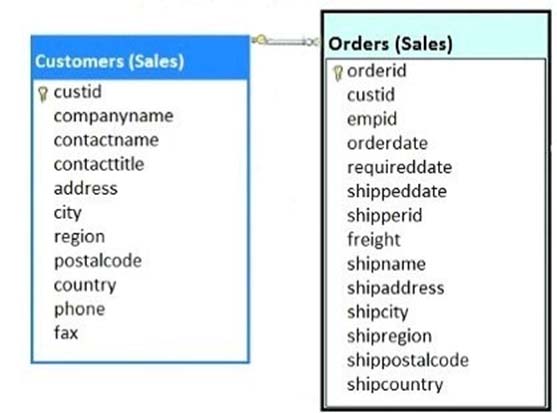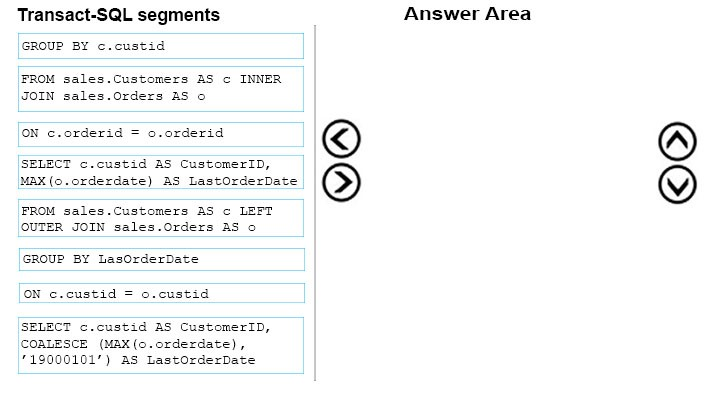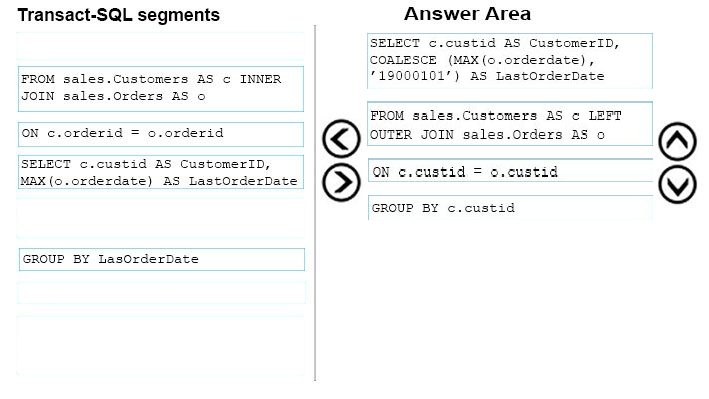

DRAG DROP -
You have a database that includes the following tables:
You need to create a list of all customer IDs and the date of the last order that each customer placed. If the customer has not placed any orders, you must return the date January 1, 1900. The column names must be CustomerID and LastOrderDate.
Which four Transact-SQL segments should you use to develop the solution? To answer, move the appropriate Transact-SQL segments from the list of Transact-
SQL segments to the answer area and arrange them in the correct order.
Select and Place:

Robintang0924
Highly Voted 5 years, 6 months agojulie2020
Most Recent 5 years agoAndy7622
4 years, 8 months agoBenAsare
5 years, 9 months agofabzo
5 years, 9 months agoMML
5 years, 2 months agoAndy7622
4 years, 8 months ago